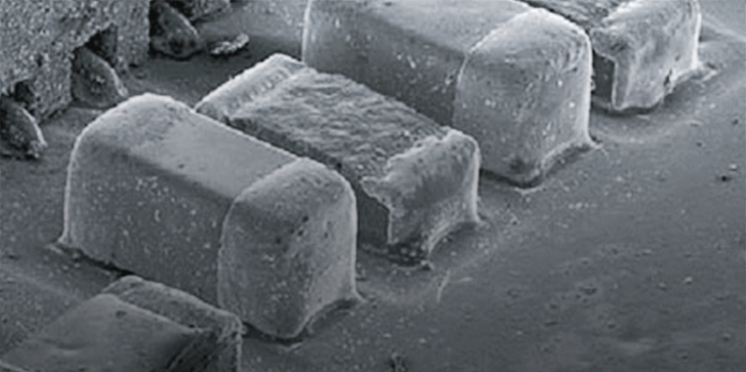ice embedding
ice embedding
Ice embedding is one of rapid freeze fixation techniques used for biological specimen preparation in transmission electron microscopy.
This technique embeds a suspended specimen of biological macromolecules (purified proteins, viruses, etc.) in an amorphous ice film with a few tens of nm to a few hundreds of nm. It enables us to observe a molecular state of the specimen in a liquid solution without staining.
In an actual experiment, a few μL suspension liquid is dropped onto a micro grid subject to hydrophilic treatment, excessive liquid is removed with a filter paper, then the specimen is rapidly frozen by immersing it into a coolant as quickly as possible. Liquid ethane or liquid propane is used commonly as a coolant because these are easy to sublimate and have a large temperature difference between the melting point and the boiling point.
Schematic of ice embedding.

Cross sectional view of ice-embedded specimens, which are embedded in amorphous ice.

Cryo-TEM image of ice-embedded bacteriophage T4.

The morphology of the head and tail parts of the bacteriophage is well preserved.
This technique embeds a suspended specimen of biological macromolecules (purified proteins, viruses, etc.) in an amorphous ice film with a few tens of nm to a few hundreds of nm. It enables us to observe a molecular state of the specimen in a liquid solution without staining.
In an actual experiment, a few μL suspension liquid is dropped onto a micro grid subject to hydrophilic treatment, excessive liquid is removed with a filter paper, then the specimen is rapidly frozen by immersing it into a coolant as quickly as possible. Liquid ethane or liquid propane is used commonly as a coolant because these are easy to sublimate and have a large temperature difference between the melting point and the boiling point.
Schematic of ice embedding.

Cross sectional view of ice-embedded specimens, which are embedded in amorphous ice.

Cryo-TEM image of ice-embedded bacteriophage T4.

The morphology of the head and tail parts of the bacteriophage is well preserved.
Related Term(s)
Term(s) with "ice embedding" in the description
Are you a medical professional or personnel engaged in medical care?
No
Please be reminded that these pages are not intended to provide the general public with information about the products.




